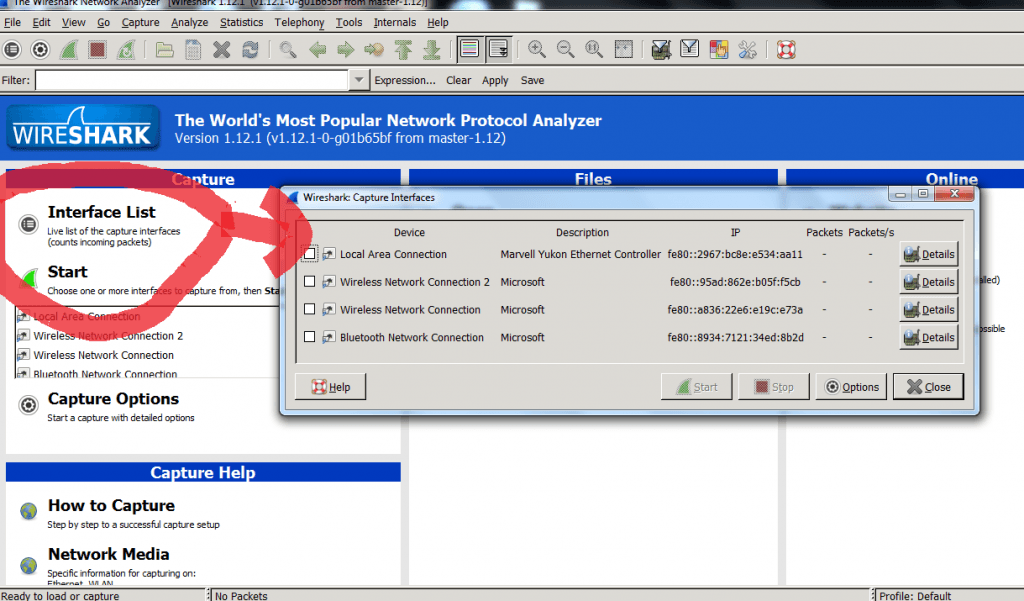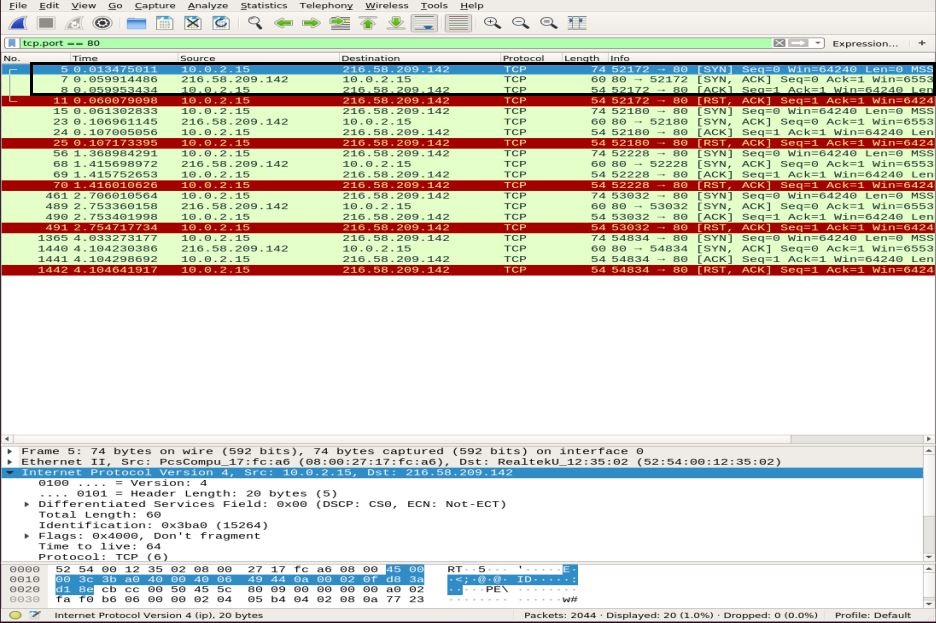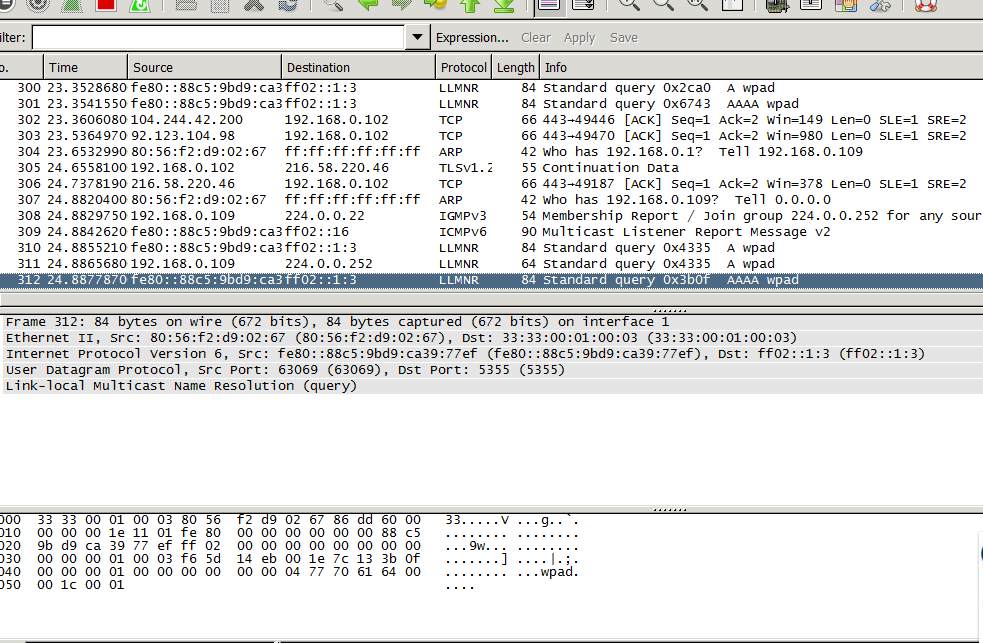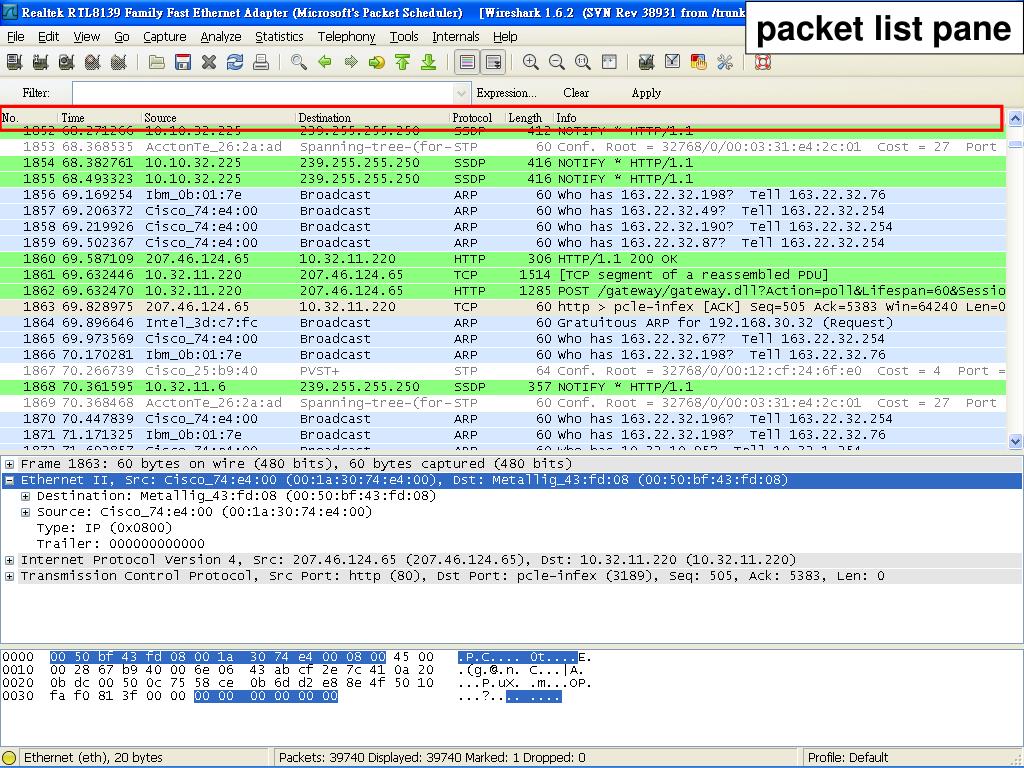
The packet listing can be sorted according to any of these categories by clicking on a column name.

The packet-listing window displays a one-line summary for each packet captured, including the packet number (assigned by Wireshark this is not a packet number contained in any protocol’s header), the time at which the packet was captured, the packet’s source and destination addresses, the protocol type, and protocol-specific information contained in the packet. The Capture menu allows you to begin packet capture. The File menu allows you to save captured packet data or open a file containing previously captured packet data, and exit the Wireshark application. Of interest to us now are the File and Capture menus. The Wireshark interface has five major components: x The command menus are standard pulldown menus located at the top of the window. Packet content in hexadecimal and ASCII Figure 2: Wireshark Graphical User Interface command menus display filter specification listing of captured packets Initially, no data will be displayed in the various windows. Running Wireshark When you run the Wireshark program, the Wireshark graphical user interface shown in Figure 2 will de displayed. If you have any question, please contact with Mini:, her office hour is Monday 11:30am – 1:30pm at Sun Workstation lab. You don’t need submit anything, since it is to get familiar with the tool. You can find the free software at Http://Once Wireshark is up, please follow instructions in the file Wireshark_tutorial.

Meanwhile, if you have a personal PC and Internet access, you can install wireshark onto your PC.

Our Sun Workstation administrator is installing wireshark.

Wireshark (Ethereal) Tutorial If you have not use Wireshark, this is the chance to learn this power networking tool, majority of all rest labs will be based on Wireshark.


 0 kommentar(er)
0 kommentar(er)
